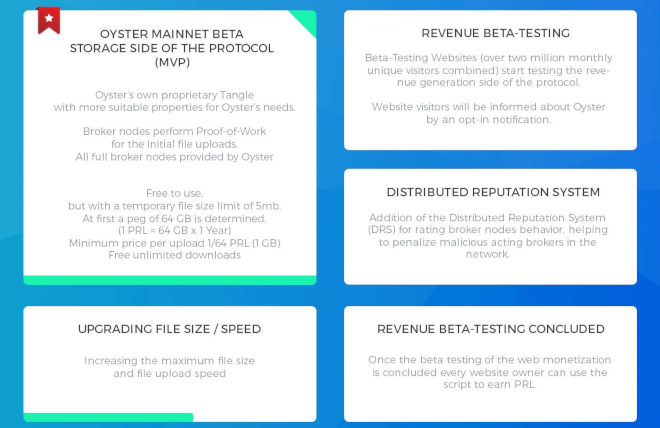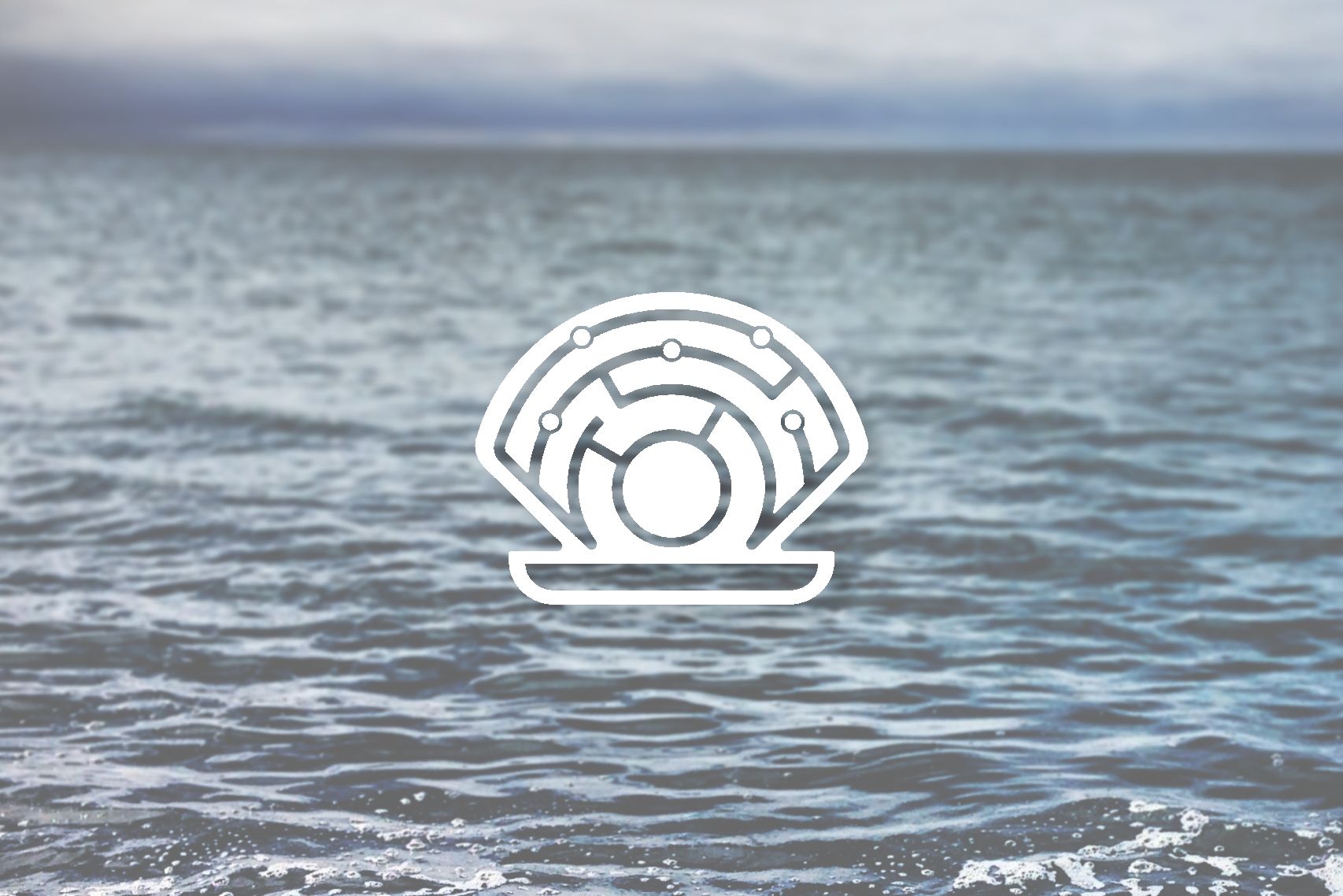After a bumpy mainnet launch in early June, Oyster has announced plans for the next phase of the project’s development.
In the coming months, Oyster will renew its focus on marketing and public outreach. This will include making PRL tokens easier to purchase, increasing overall usability, and adopting a more open personality for its communications strategy.
Along with the shift in focus, the Oyster team also released a lean roadmap that outlines technical milestones for the project’s near and far future.
Project Overview
Oyster’s goal is to replace the broken online advertising system with something less intrusive.
With Oyster, users upload files to a decentralized service and pay a small cryptocurrency fee for storage. Web-based publications can then add Oyster’s “one line of code” to run a script that lets visitors opt-in and search for PRL tokens while they browse the site.
Publishers are paid a portion of the discovered PRL, which allows them to ditch advertisements in favor of Oyster’s lightweight and invisible system. It also provides a data storage product that both the general public and businesses can put to use.
Oyster launched its mainnet at the beginning of June 2018. It features a simple file upload and retrieval system that allows users to test the service at no charge. The functionality is limited to small files, though plans are to increase those caps in the future.
Oyster’s one-line revenue model for publishers is still under private beta testing.
Team Changes
Oyster was founded by the pseudonymous Bruno Block. Despite his secretive personality, Block has remained a central public figure in Oyster’s communications.
For the next phase of development and promotion, Bruno will be stepping down as CEO. His new focus will be exclusively on protocol architecture.
William Cordes is taking over as CEO of Oyster. Cordes has experience as an angel investor, venture partner, and business manager. He will lead Oyster’s renewed push into the public spotlight as the platform grows over the coming months and years.
Stronger Marketing Plans
An aggressive approach to marketing and public exposure lies at the core of Oyster’s new direction.
Cordes and CMO Chris Garner will work to increase the project’s visibility by developing new relationships. These include working with content creators and customers, driving value through strategic partnerships, and working with like-minded blockchain projects.
Cordes was careful to point out these relationships won’t develop overnight, though they are working hard to build better market awareness.
Historically, Oyster has been a shy project, avoiding conferences and public appearances in part due to Block’s preference for anonymity. As Cordes assumes role of CEO, this aversion to the spotlight will fade.
According to Cordes:
We will be much more proactive with regards to conferences and public appearances and you will be seeing a lot more of the Oyster team in the future.
New Exchange Listings
A point of frustration for the Oyster community is the limited availability of the platform’s token, PRL. At the time of writing only a handful of exchanges list PRL pairs: KuCoin, Cryptopia, IDEX, EtherDelta, and CoinExchange.
The delays largely stem from Oyster’s slow-moving incorporation efforts. The team has ongoing efforts to list PRL on a number of exchanges, though the process has been “significantly more drawn out than we would have liked,” Cordes said.
Late-stage discussions have been initiated with several top 10 (by volume) exchanges. Many more are in-process with top 30 exchanges. A definitive agreement was also signed with a top 20 exchange in mid-June.

Roadmap Updates
As part of Oyster’s new development phase, the team released a lean roadmap showcasing some of the major milestones for the near and far future.
Currently, Oyster has its own proprietary IOTA Tangle custom-built to meet its needs. File uploads and retrieval via web interface is active, though a temporary limit of 5 MB has been set. Oyster also handles PRL payments for these files, making the service free for users.
Oyster is working on increasing the maximum file size and upload speed to allow more substantial storage on the network. This includes uploading multiple files and folders at once using a single OysterHandle.
The near future includes beta testing for the revenue system. The team is currently working with a private set of publishers receiving over 2 million monthly unique visitors. This will eventually expand to the public so every website owner can use the copy/paste script to earn PRL.
A distributed reputation system is in the works that will allow broker nodes to be rated according to their behavior. This should give Oyster the ability to self-regulate and penalize malicious actors on the network.
A key milestone for the near future is initializing mainnet payments and launching web monetization. Users will soon pay for uploads based on the size and storage length of their content.
A fiat gateway is set for the more distant future of Oyster. This will provide the option of buying storage with payment brokers such as PayPal or Stripe. Oyster Protocol Inc. will then convert the payments to PRL so the underlying architecture will remain unchanged.
At least two intelligent wrappers are planned for Oyster. One is for consumers and will create a Dropbox-like interface for file management. The other is designed for corporate cloud storage use. Both will be accessed anonymously using OysterHandles.
Refinements to the entire system are planned throughout Oyster’s near- and long-term future. The project will also merge back to the IOTA Tangle once swarm is implemented by the IOTA team.
Working With the Community
With a limited public presence, Oyster has always fallen back to its community for support and feedback. Those efforts will continue as the project graduates from concept to post-launch product.
Weekly development updates are being released on the Oyster Protocol blog. These include technical details about new network features as well as information about the team’s marketing and outreach efforts.
Oyster has also begun engaging localization services to aid in usability and exchange adoption around the world. The team is currently focusing on community building in Japan, China, and South Korea.
Final Thoughts
Projects like Oyster and Brave’s Basic Attention Token are promising steps into blockchain-powered online content.
By addressing the common inconvenience of digital advertising, Oyster could attract a large and active community of users who are ready for change. Web publishers will be the first to hop on board, but with sustained interest it wouldn’t take much for content creators of all sizes to join in. The one-line revenue model is arguably easier to implement than an ad network, since Oyster won’t interfere with layout or design issues.
Oyster’s insistence on binding the revenue model to a tangible data storage service is also a point in its favor. Its success isn’t tied to altruistic actors or miners with expensive hardware. All it needs are consumers with files to share and creators who need a source of income.
Oyster’s next phase announcement came at just the right time. The project has progressed beyond concept to a usable product, enough to transform curious passers-by into engaged users.
The big milestone is, of course, the launch of the revenue system. That’s still a few months away, but when it hits, we’ll see just how much of an impact Oyster can make.
Related: 5 Reasons Oyster Protocol is Worth Keeping an Eye On

